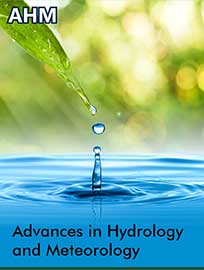 Research Article
Research Article
Remote Sensing Analysis of Water Quality in Reservoirs at Water Fund Locations
Fernando Miralles-Wilhelm1,2*, Ivan Lalovic3, Sara de Moitié3, Philipp Grötsch3, Adam Belmonte3, Nathan Karres1, Kari Vigerstøl1, Shi-Teng Kang1, Jihoon Lee4, Raúl Muñoz Castillo4
1The Nature Conservancy, Arlington VA, USA
2George Mason University, Fairfax VA, USA
3Gybe, Portland OR, USA
4Inter-American Development Bank, Washington DC, USA
Fernando Miralles-Wilhelm, The Nature Conservancy and George Mason University, USA.
Received Date: August 12, 2022; Published Date: September 15, 2022
Abstract
This investigation introduces remote sensing (RS) methods for monitoring of water quality in support of measuring, understanding, and managing impacts in sensitive water bodies that are part of the Water Funds portfolio. The water bodies focus of this work are as follows: the Jaguari-Jacarei Reservoir in the Cantareira reservoir system (Sao Paulo Water Fund); the Ribeirao das Lajes Reservoir in the Guandu River systems (Río de Janeiro Water Fund); the Rio Grande Reservoir in the Medellin reservoir system (Cuenca Verde Water Fund); and the Thika Reservoir in the Nairobi reservoir system (Upper Tana-Nairobi Water Fund). This study focuses on the development and application of a RS data processing pipeline that detects phytoplankton abundance as a proxy for pollution by nutrients, as well as sediments, which are the major water quality issues identified across the Water Funds portfolio. This pipeline is tailored to specific reservoir systems of interest to Water Funds stakeholders and thus provides a comprehensive dataset for a suite of water quality parameters. Additionally, this pilot leverages remote sensing data archives to provide a baseline assessment of how these metrics behave over time and in space. Remote Sensing applied to monitoring of water quality in lakes, rivers and reservoirs is a valuable emerging technology that can provide geospatial information about water clarity, nutrient, bacterial and industrial pollution from urban and rural sources. The methodology presented in this paper using cloud computing allows rapid monitoring deployment and scalable coverage across numerous watersheds and geographies. Although this paper presents a comprehensive analysis of this entirely new source of water quality data across the sites and locations of interest, a more detailed analysis can be performed by looking at different timeframes (e.g., entire data set or monthly aggregates) within these watersheds. Additional insights may be unraveled by further combining the water quality data sets of this work with other sources of information including local sensors, information from water and sanitation utilities and a more detailed analysis of the timing of location conditions and their local impacts.
-
Fernando Miralles-Wilhelm*, Ivan Lalovic, Sara de Moitié, Philipp Grötsch, Adam Belmonte, Nathan Karres, Kari Vigerstøl, Shi-Teng Kang, Jihoon Lee, Raúl Muñoz Castillo. Remote Sensing Analysis of Water Quality in Reservoirs at Water Fund Locations. Adv in Hydro & Meteorol. 1(3): 2022. AHM.MS.ID.000512.
-

This work is licensed under a Creative Commons Attribution-NonCommercial 4.0 International License.






